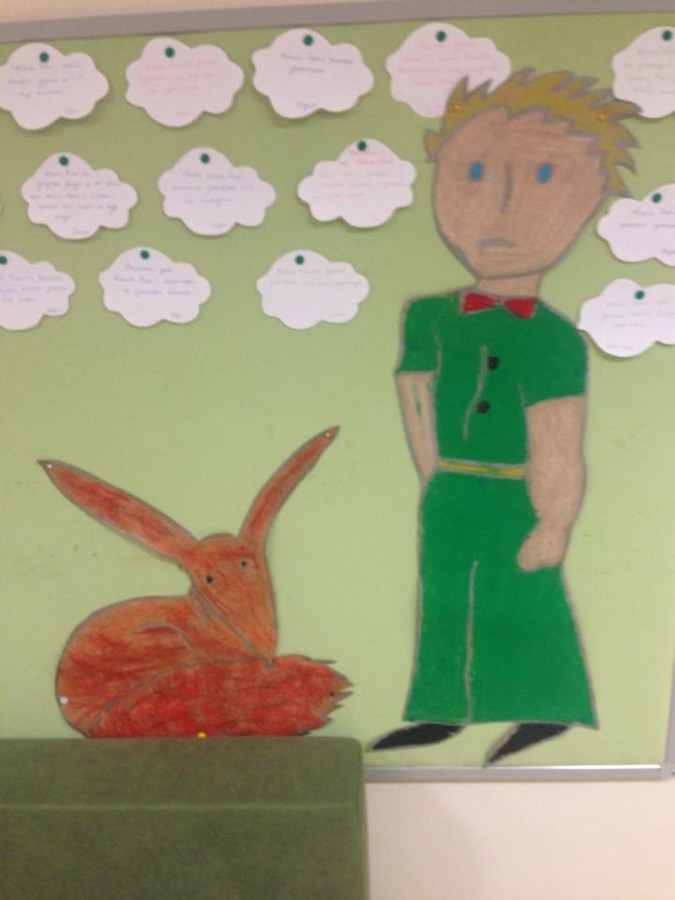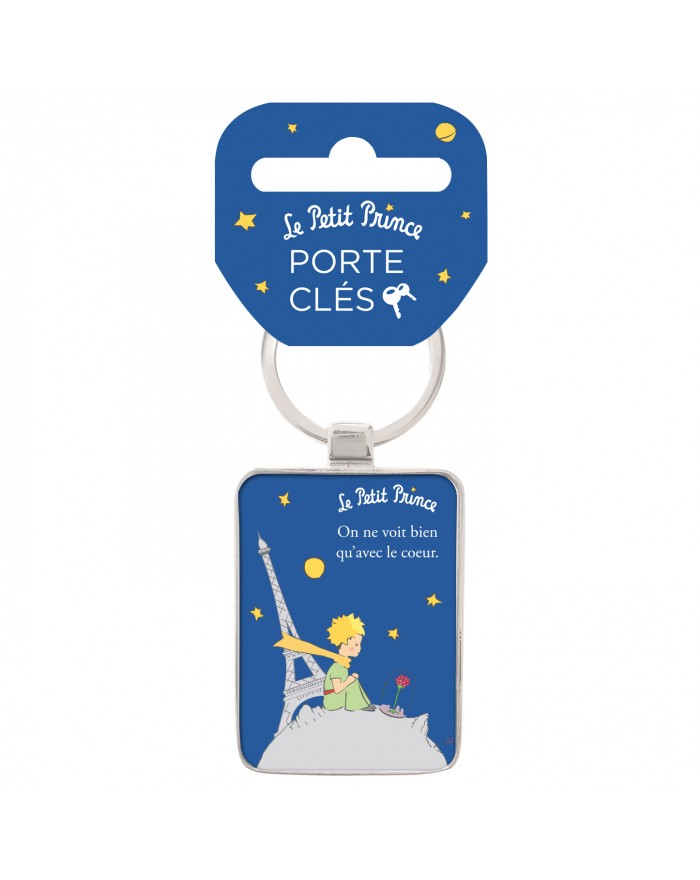Enjoy this costumes ! And if it’s too late to create your own for halloween, order it on the online shop !
All the info on Glitter + Wit blog !
Or fall in love with our brand new costume
Available on the online shop !
Enjoy this costumes ! And if it’s too late to create your own for halloween, order it on the online shop !
All the info on Glitter + Wit blog !
Or fall in love with our brand new costume
Available on the online shop !
On Fridays, fans of The Little Prince express their talent with Fan Art Friday!
Send us your creations via our facebook page, we’ll publish them here!
Ana Sofìa Casaverde
Annabel Lee
Aude-Hélène Georget
Baidurya Mukherjee
Buse Dağtaş
Shinz
Eva Bednarczyk
Gabriela Pérez
Iza Ortiz
Moha Mad
Nancy Zapata
Rafaela Schendroski
Raquel Frómeta Ureña
Tsukiko Ángel Damián
Viki Bobadilla
The Little Prince movie has been warmly welcomed last week in China.
Find here the Premiere replay :

The final poster of « The Little Prince » [Photo: mtime.com]
The final trailer and poster of the upcoming animated film « The Little Prince » have been released before its premiere in China this Friday.
After the release of the Chinese theme song by actor Huang Bo, the trailer has unveiled the characters in the movie including the businessman, the King and the conceited man.
The story follows a little girl who is brought into a magical world, where anything is possible, by her neighbor, the Aviator.
The aviator himself was brought there long before by the little prince.
This is the first adaptation of the much-loved novella, which has sold some 145 million copies in 265 languages worldwide.
The movie has hit Chinese theaters in both English and Chinese on October 16. The movie did very well, and hit 3rd rank at the Chinese box-office.
The Geek dad blog made a review of our Little Prince game !
There’s a new, computer-animated movie based on The Little Prince. While it hasn’t seen the inside of a theater in the US yet, it has been playing elsewhere this summer, to good reviews. But if you and your family want to experience the latest turns by Antoine de Saint-Exupéry’s character, Ludonaute and Asmodee have you covered. The Little Prince: Rising to the Stars is a new game for two to six players, aged 6 and up and plays in about 20 minutes. The game is designed by Antoine Bauza and Bruno Cathala, two very popular game designers.
Summary
You play as a pilot, flying your very own biplane. You’re following in someone else’s wake, a Little Girl, on your way to visit The Little Prince, in the stars. It’s a magical journey that is full of surprises and maybe a trap or two. Who will reach The Little Prince first and who will have the most stars?
Components
There are a good number of cards, cardboard bits and a very flexible board. The game’s “route” is constructed with 8 cardboard pieces that make up the board. Because the pieces are interchangeable, you can make a variety of game boards from these eight pieces.
Everything is very colorful and the artwork is dreamlike, making for a very relaxed and fun experience. Little fluffy clouds mark the board and these are the waypoints that pilots take to reach the goal of the game. All of the cardboard pieces are made of sturdy cardboard and the player tokens, made to resemble a plane, are especially nice.
There are 18 story tiles, a dozen telescope tokens, three dozen star tokens, and a dozen community cards, along with 8 cards, an aviator’s helmet, and a wooden plane token for each player. The quality of everything is very good, right down to the printed insert in the box. Everything is printed on both sides and feels and looks like a good game should.
Setup and Gameplay
Setup is really easy. Before playing, construct the route from the eight route parts. Parts can occur in just about any order, as long as the Grandfather’s House is first and The Little Prince‘s planet is last. At each of the connecting boards of the route, place six story tiles, four face up, two face down, on either side of the connecting board. Set all the telescope tokens, telescope side up, near the Grandfather’s house and place the star tokens nearby. Allow each player to choose a color and then pass each player the corresponding token, aviator helmet, cards, and a single star token. Shuffle the community Grandfather tokens and place them near the board, facedown. Surround The Little Prince‘s planet with five paper plane tokens and you are now ready to play.
Decide who goes first and line up your plane tokens at the Grandfather’s house. On your turn, play one of your cards to advance your plane that number of clouds toward the final goal. Once played, that card cannot be used for the rest of the game. Place used cards under your aviator’s helmet to remember that those cards are exhausted. Players can move anywhere between one cloud and the number of the card; they need not use the full movement shown on the card. However, the number on each players’ cards add up to 24 and reaching the goal requires 26 moves, creating a shortfall. There are a couple of ways to make up the difference.
When moving forward, clouds that you land on have different effects. Some clouds are just clouds, they have no effects. Other clouds have a star on them and you get to add a star token to your pile when landing on these clouds. There are clouds that have a telescope icon on them and these allow you to pick a telescope token. On the other side of the token, are a number of stars and another icon that allows you to take stars from the stockpile, lose stars to the stock, or steal stars from your opponent aviators. Finally, there are clouds that have birds on them. Stopping here allows you to take the top card from the Grandfather pile. These cards include a couple of special movement cards, plus cards that allow extra fast movement, allowing you to fly past your competition.
The other way to fill in the gap between your cards and total required movement is by landing on a cloud where another pilot is already stopped. When this occurs, you don’t get the effect of the cloud, but you can take a random card from the aviator whose plane you have landed on. You have to give a card to her in return and it can either be one of yours or the card you just stole from her. You can play cards of any color, even if they are not yours.
Aviators soar ever higher, moving along the board. The active player is always the player in last place, even if that player takes several turns in a row. When an aviator passes a connecting board, she is allowed to pick one of the story tiles bracketing the board. Story tiles give a player a number of stars and there is a pair of tiles that gift a 6 star bonus if you can manage to collect them both. Players can take face-up or face-down story tiles.
Play continues until all players have run out of cards. If a player has run out of cards before reaching The Little Prince, a player can discard a story tile in exchange for moving five clouds forward or she can remove her plane from the route and wait for the scoring phase. Players who do reach the planet have the opportunity to pick a paper plane token, which also gifts stars to that player. Upon reaching the planet, a player then discards any remaining cards she has in her hand.
When all players have run out of cards, aviators then count up the stars they have before them–from star tokens, story tiles, and paper planes. The player with the most stars wins!
Verdict
At GeekDad, we are not big fans of games like CandyLand or Chutes and Ladders, mindless games that do nothing to challenge young minds. We live in a golden age of board games where there are good choices for games for kids: games that encourage thinking ahead, making choices, and understanding the consequences of actions. Add The Little Prince: Rising to the Stars to that growing list of great games for kids.
This is a game that obviously skews toward younger players, but, unlike a Candyland type game, it doesn’t insult them in the process. Players are given decisions every step of the way. But a strategic mind isn’t mandatory. Kids will have just as much fun flying full speed ahead–Bauza and Cathala should be commended for not only creating a game that caters to young players, but also one that can grow with them and allow multiple strategies for kids as they grow and mature.
For instance, it might be necessary to do something “mean” to a player (landing on their tokens and taking their cards) so you can finish the game. Sometimes that player may seek some retribution. Of course, the game can be played without any intra-player conflict, but that’s just one of the choices players will have to make. Furthermore, it’s a strategy that might appeal more to an 8- or 9-year-old, as opposed to a 6-year-old.
I feel like I would understand some elements of the game a little bit after seeing the movie. Still, the art is very ethereal and fun to look at, and gameplay is interesting enough to keep adults engaged while playing with kids. It’s a fun family game and The Little Prince: Racing to the Stars is a very good choice for homes with younger gamers.
On Fridays, fans of The Little Prince express their talent with Fan Art Friday!
Send us your creations via our facebook page, we’ll publish them here!
Emna Ben Othman
Fabio Grachiki
Joana Matos
Luciane Cordeiro Oliveira
Luna Miyawaki
Marthite Rmz Melissa Mey istanbul school
Melissa Mey istanbul school
Valentina Da Pino Londoño
Yimini Chan
On Fridays, fans of The Little Prince express their talent with Fan Art Friday!
Send us your creations via our facebook page, we’ll publish them here!
Moonserrat Castillo
Anunya Pholchan
jodie bougaud
Baharak Karimi
Franciele Ramos
Thaís Lutz
Sandra Bereza

Rediscover cults watercolors by Saint-Exupéry with this coloring book for adults. Both relaxing and de-stressing, the adult coloring is a truly original activity.
More than ever, you will remember that « All grown-ups were children first. But few of them remember it. »